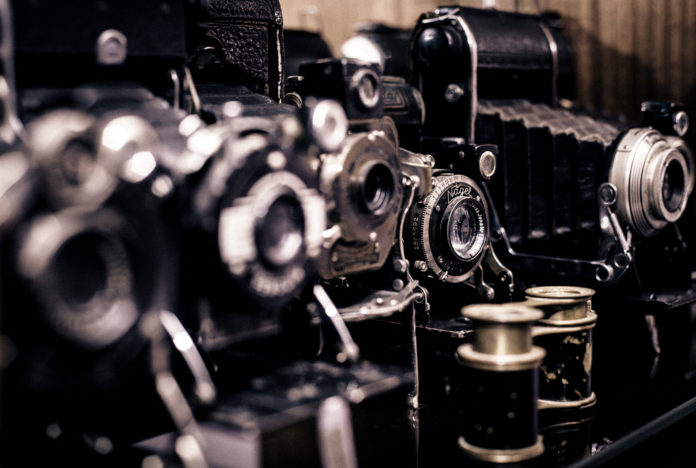
Michael Jordan has achieved a lot in his life. He is a six-time NBA champion, a 14-time NBA All-Star, a three-time All-Star MVP and a double Olympic gold medallist. His “Jumpman” symbol and “Air Jordan” tag can be found on hundreds of millions of t-shirts and trainers across the globe.
With a CV like that, little seems to be beyond the “Jumpman’s” reach.
And yet, until very recently, Jordan and his team were powerless to prevent a company little-known outside China from using Jordan’s name and likeness to sell trainers and other sportswear to very profitable effect.
This case and others pose interesting questions about what rights sports stars have to protect their image and name, particularly in China. Indeed, although the term “image rights” will be a familiar one to sports fans, what does this actually mean in practice?
What are Image Rights?
Given how much commercial value in sport is attached to individual personalities and stars, the concept of a sports star having discrete “image rights” that they can protect and commercialise is an important one.
How these rights are protected varies by jurisdiction. In common law jurisdictions such as, Singapore, Australia and Hong Kong, there is no single right to protect a person’s image. Image rights are protected in these jurisdictions through a patchwork set of established intellectual property rights, such as copyright, trademarking and passing-off.
However, in China there is codified protection to a person’s name and image rights:
- Under the General Principles of the Civil Law, an individual has exclusive rights and sole control to the use and disposal of his attributes, including name rights, image rights and reputation. When these attributes are infringed, the individual has the right to a number of remedies, including damages for losses suffered, cessation of infringement, restoration of reputation, elimination of the impact of the infringement and apology.
- There is also further protection under the Advertising Law, which states that, where an advertiser or advertising agent uses the name or image of another for advertising, such person shall obtain prior written consent of the person concerned.
Right of name – Michael “Qiaodan”
Despite these codified rights, Jordan and his team were, up until recently, unable to prevent Qiaodan Sports Co Ltd (“Qiaodan”) from freely and legally using both the Chinese transliteration of Jordan’s name (“乔丹” or Qiao Dan) and a very similar logo to the famous “Jumpman” as trademarks. Qiaodan had launched its products using the “乔丹” and “Qiaodan” marks as early as 2000 and was reported to have made a profit of over US$50 million in 2011 alone. At its peak, Qiaodan had around 6,000 retail outlets in China and even contemplated a public listing on one of the major Chinese Stock Exchanges.
This story would cause some to roll their eyes in knowing disapproval, and perhaps reinforces some of the traditional prejudices about protecting intellectual property in China.
Recent developments have shown, however, that in terms of protecting celebrity images, the Chinese legal system can be more useful than some may assume, as the codified rights are clarified in the Supreme People’s Court of China (SPC).
In late 2016, the SPC decision established three key points in Jordan’s favour:
- Legal basis for protecting right of name
Article 33 of the Trademark Law provides that a trademark application shall not infringe upon a prior existing right, however the provision does not specify the type of prior existing rights applicable. The SPC held that a “prior existing right” includes civil rights protected by other laws, including the General Principles of Civil Law (mentioned above).
- Criteria for prior existing right to name
Where a prior existing right to name is asserted in a dispute based on Article 33 of the Trademark Law, an individual needs to satisfy the court that: (a) the particular name has achieved reputation in China, and is known to the relevant public; (b) the relevant public has associated the name with the particular individual; and (c) there is a stable correspondence between the name and the individual.
- Protection of a Chinese translation of foreign names
The SPC recognised that foreign individuals are commonly referred to by the Chinese nationals in their partial names and also its translation and, crucially, that these should be taken into account by the SPC.
The SPC found that Jordon is consistently referred to as “乔丹” in China, and that the test above has been satisfied. This allowed the SPC to revoke the previous ruling on Qiaodan’s ownership of the “乔丹” trademark. However, frustratingly for Jordan, the ruling was not a slam dunk, as the SPC found that the test was not satisfied for the “Qiaodan” trademark, meaning Jordan does not own the right of name for the Chinese transliteration of “Jordan”.
The SPC decision is significant because it sets the scope of protection for personal names in trademark cases. Prior to this ruling, it was unclear how foreign names are protected under the Chinese laws, resulting in inconsistent rulings by the lower courts.
Other celebrity examples
Jordan may be the most high-profile celebrity to safeguard protection of his image, but he is by no means the only one.
- Well-known Chinese actress Ruby Lin successfully took action against multiple hospitals and beauty institutions for using her images in promoting medical procedures without consent. In the 13 actions filed by Lin between 2013 and 2016, the Courts have awarded Lin a total of RMB 5 million of financial and moral damages.
- Chinese Olympic hurdles champion Liu Xiang also had success when he came up against a Beijing-based publisher and a local department store for infringement of image rights in 2004. The publisher used Liu’s image as the cover of an edition of a “Boutique Shopping Guide”, and in various other places in the magazine. Liu’s case was interesting as the publisher relied on “fair use” exemptions from copyright infringement (more normally associated with allowing news broadcasters to use images they do not otherwise have the rights to use). The Beijing Intermediate Court rejected the publisher’s defence on fair use, and further held that, due to layout of the cover of dispute edition, the public might not distinguish that the photo of Liu and the advertisement of the local department store were two distinctive elements, and may perceive that Liu was endorsing the advertisement promoting the local department store.
Conclusion: Image Rights in China
What can be seen from the Jordan case and others is that China is by no means a “Wild West” when it comes to protecting image rights. On the contrary, the Chinese system provides codified and increasingly robust protections for domestic and foreign sports stars and celebrities. Navigating the Chinese court system to make these arguments can, as Jordan found out, be a lengthy process, but there are potential rewards for those willing to play to the last buzzer.
MediaWrites APAC Sports Update 1 can be found here.
This post was written by Alex Norman (Registered Foreign Lawyer, China and Hong Kong) and Justin Walkey (Chairman, Asia Pacific, China and Hong Kong).









